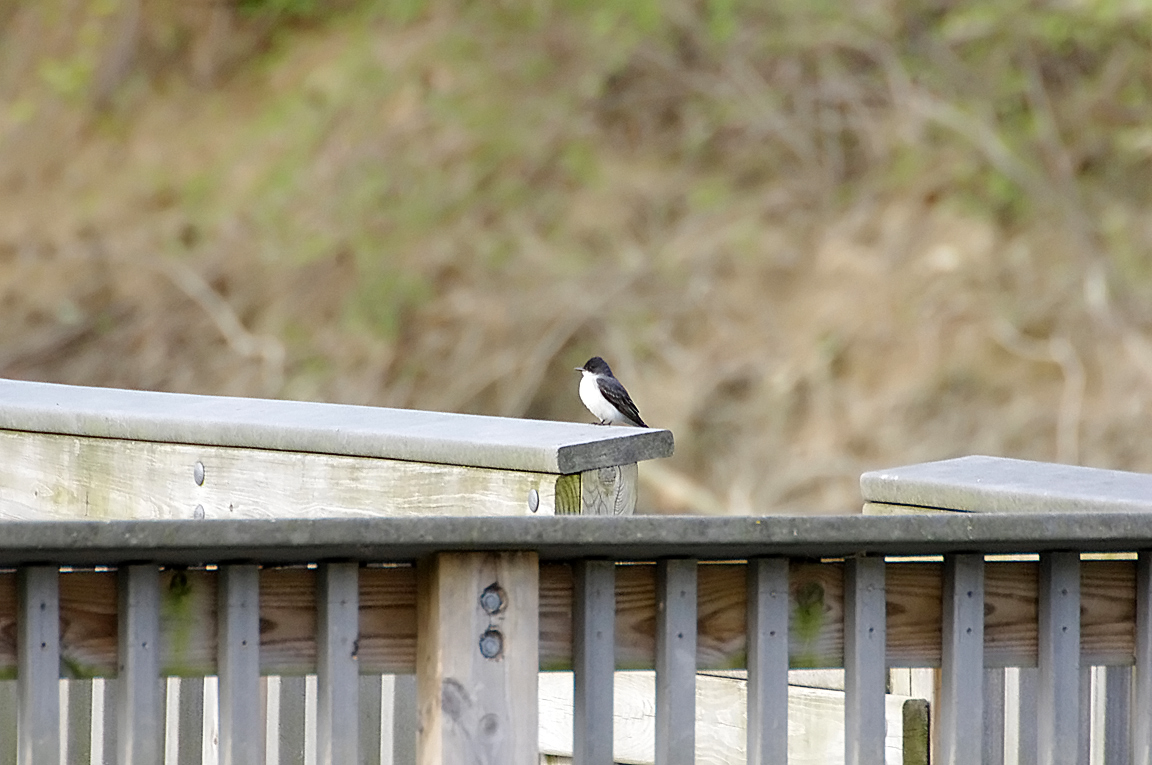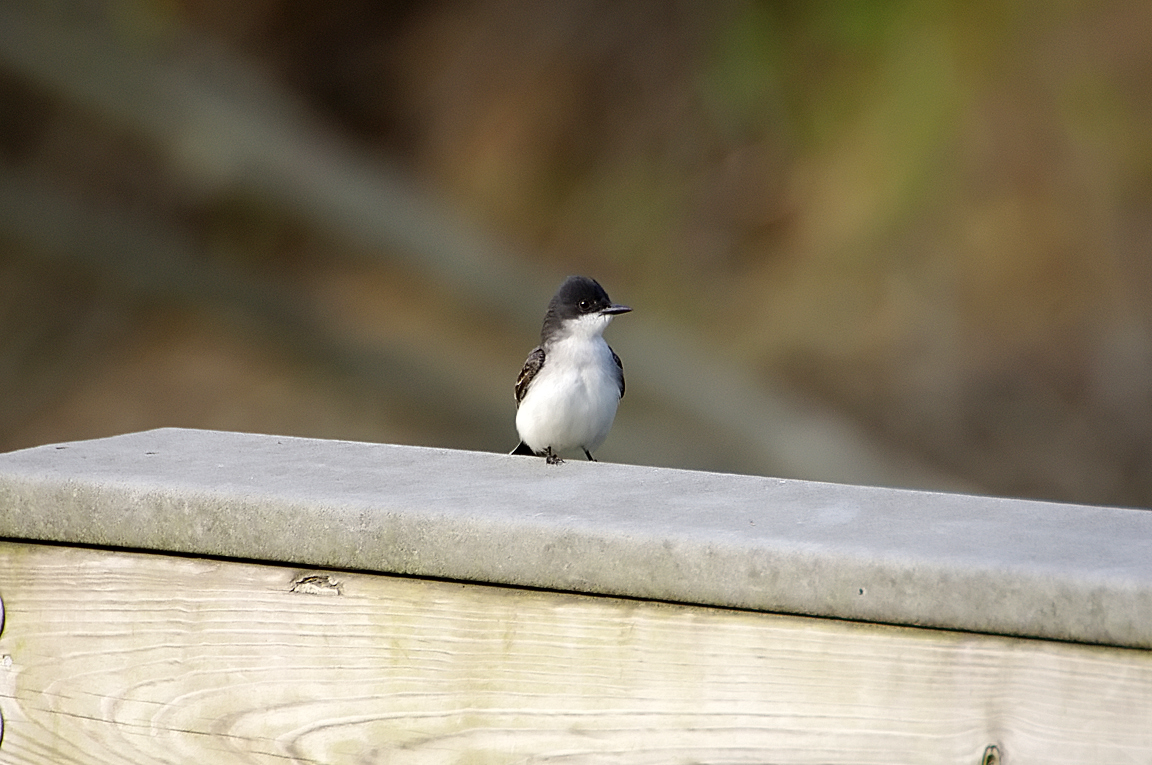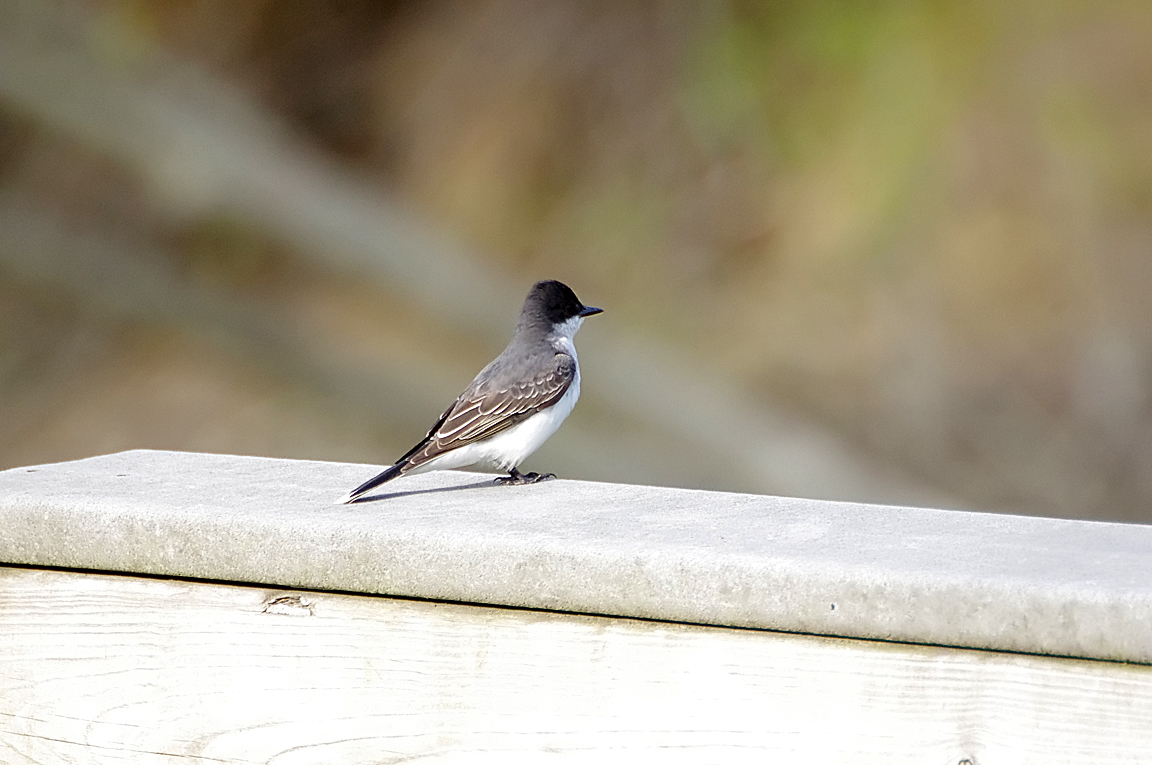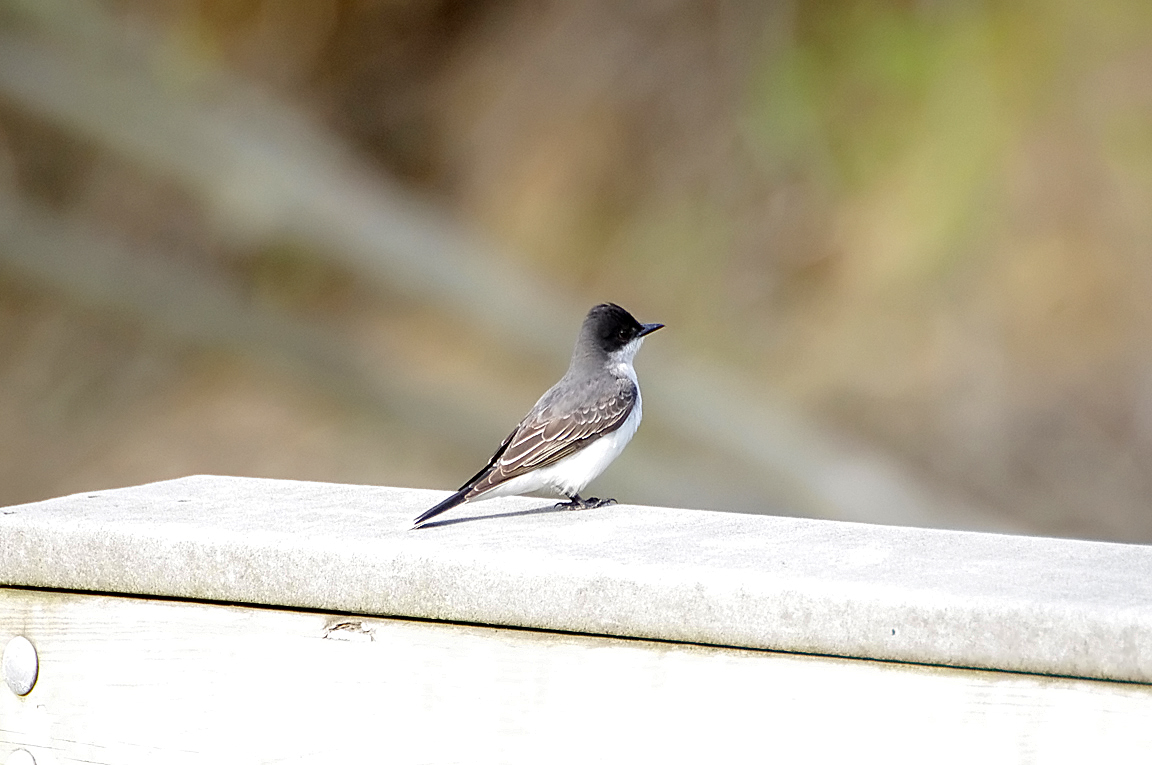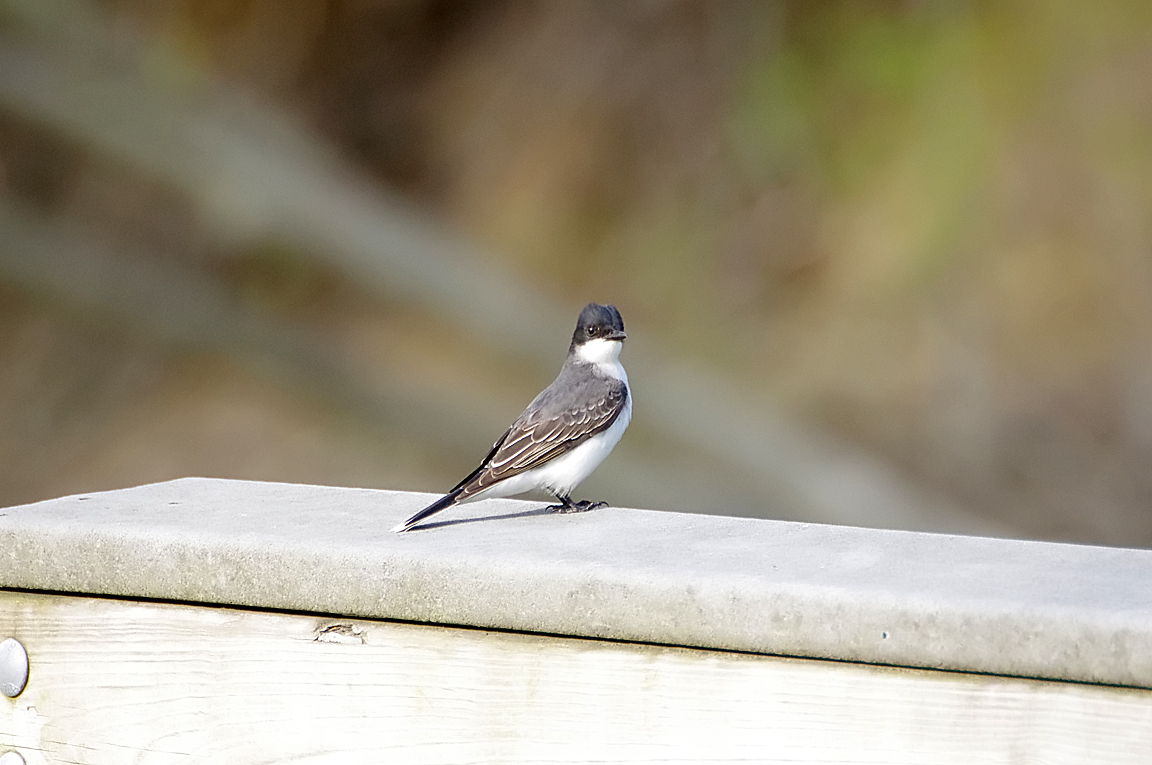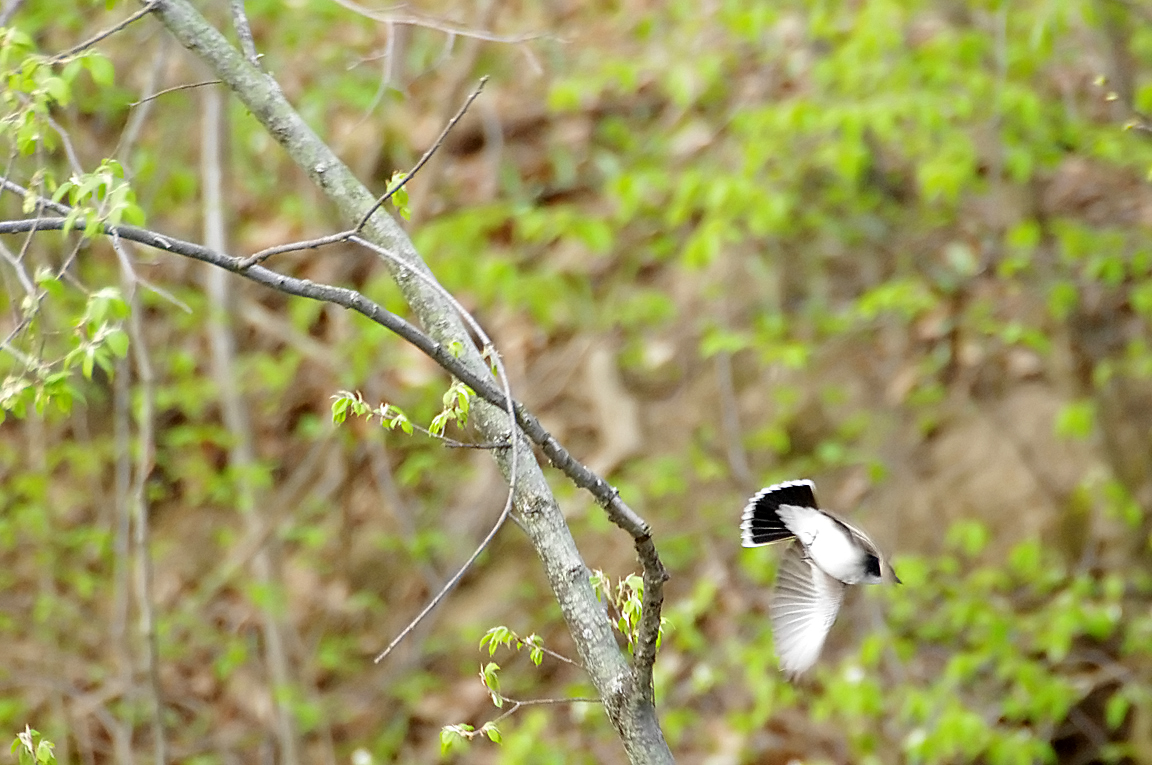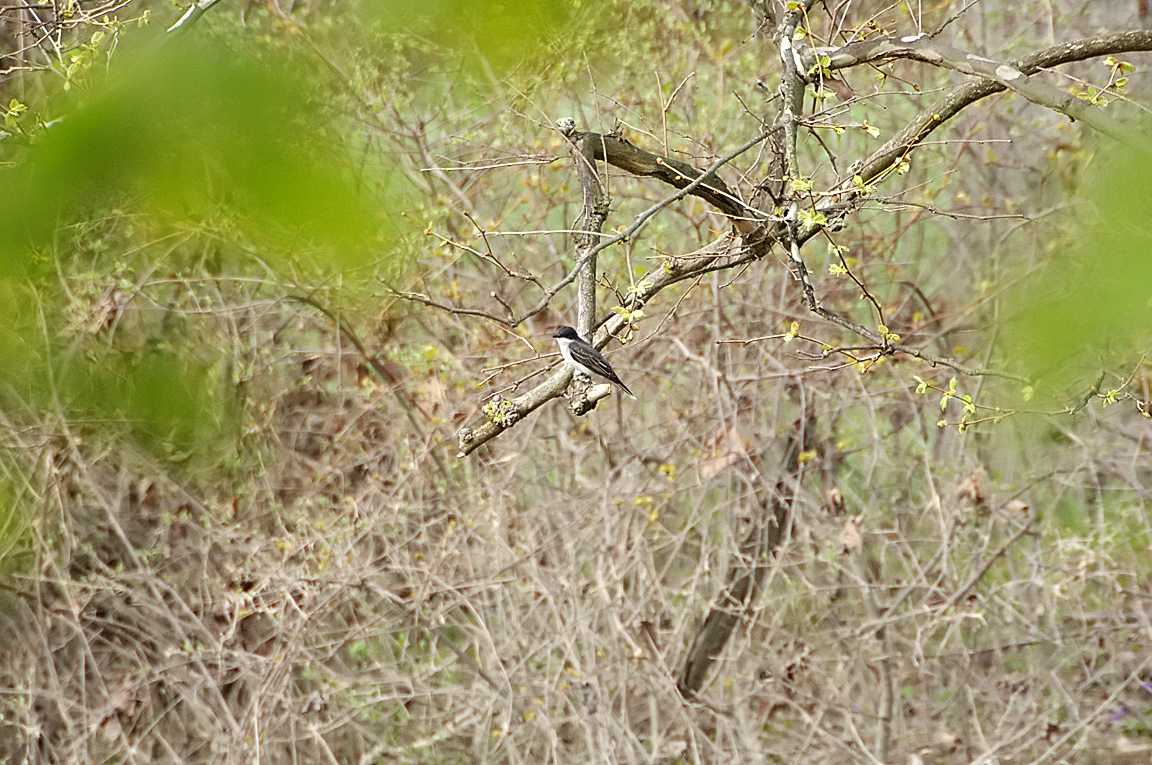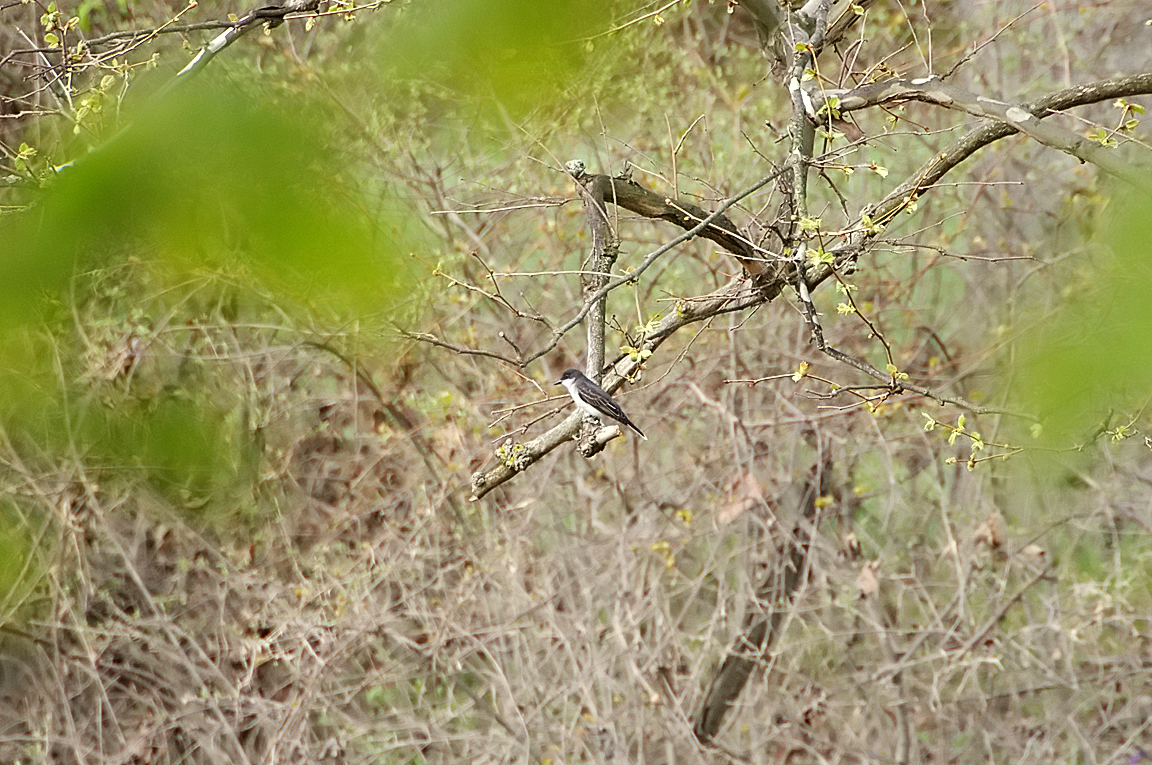|
|
|
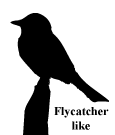 |
Eastern Kingbird
|
| Tyrannus tyrannus | |
A large dark flycatcher of fields and other open areas, the Eastern Kingbird is a common and widespread species. Despite its name, its range extends from the Atlantic to the Pacific coast.
Interesting Information
-
The Eastern Kingbird is highly aggressive toward nest predators and larger birds. Hawks and crows are attacked regularly. A kingbird was observed to knock a Blue Jay out of a tree and cause it to hide under bush to escape the attack.
-
During the summer the Eastern Kingbird eats mostly flying insects and maintains a breeding territory that it defends vigorously against all other kingbirds. In the winter along the Amazon, however, it has a completely different lifestyle: it travels in flocks and eats fruit.
-
Parent Eastern Kingbirds feed their young for about seven weeks. Because of this relatively long period of dependence, a pair generally raises only one brood of young per nesting season.
Description
Adult Description
-
Length Range: 22 cm (8.5 in)
-
Weight: 43 g (1.5 oz)
Medium-sized songbird.
Head and back dark.
Throat, chest, and belly white.
White tip to dark tail.
Sex Differences
Sexes Similar
Immature
Juvenile similar to adult, but shows buffy edges to wing feathers and a narrower white tip to tail. Also lacks the concealed crown patch.
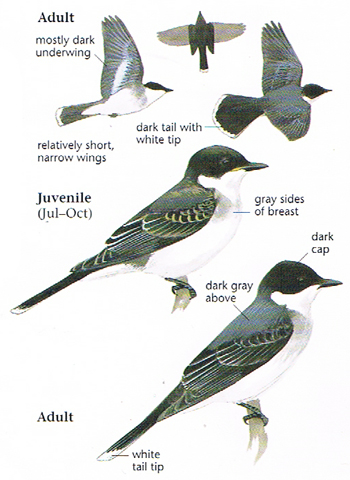
Photo taken from: The Sibley Field Guide by David Allen Sibley
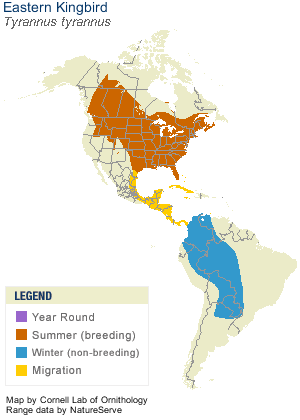
© 2003 Cornell Lab of Ornithology
|
Habitat |
|
|
Behavior |
|
Captures most prey by aerial hawking from an elevated perch. Also grabs insects off vegetation with its bill. |
|
Food |
|
Flying insects, fruits especially in winter. |
Taxonomy
| Kingdom: | Animalia |
| Phylum: | Chordata |
| Subphylum: | Vertebrata |
| Class: | Aves |
| Order: | Passeriformes |
| Family: | Tyrannidae |
| Genus: | Tyrannus |
| Species: | Tyrannus tyrannus |
Similar Species |
|
|
Bird Sound |
|
Song a series of high-pitched sputtering notes followed by a down slurred buzzy "zeer." "Ti-t-t-t-ti-zeer." Also utters the "zeer's alone. |
|
Eggs look like this |
|
Photo taken from: ARCTOS Collaborative Collection Management Solution |
